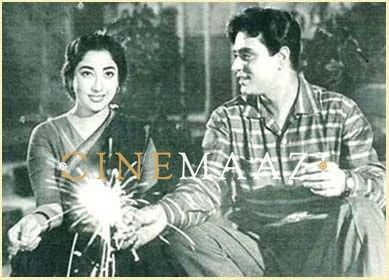Pandit Radheshyam
Subscribe to read full article
This section is for paid subscribers only. Our subscription is only $37/- for one full year.
You get unlimited access to all paid section and features on the website with this subscription.
Not ready for a full subscription?
You can access this article for $2 , and have it saved to your account for one year.
- Primary Cinema: Hindi
Lyricist Pandit Radheshyam is known for the film Jhansi Ki Rani (1953). A biopic on the life of Rani Lakshmibai, it was directed by Sohrab Modi and starred Mehtab, Sohrab Modi and Mubarak Merchant. Made under the Minerva Movietone production banner, it is credited as the first technicolour film made in India and was also the most expensive Hindi film up until then.
The story of the historical drama revolved around Rajguru (Sohrab Modi) deciding that Jhansi should get its proper recognition in history. He comes across a young girl Manu (the young Rani Lakshmibai) played by Baby Shikha. Her father has been hit by a carriage driven by an English driver. She gathers a few children to confront the driver. This, and her confrontation with an elephant, impresses the Rajguru who takes her in hand, shaping her into becoming a determined leader. He arranges for her, at the age of nine, to marry the much-older ruler of Jhansi, Gangadhar Rao (Mubarak), and become queen. Manu grows up under the expert tutelage of the Rajguru, learning physical combat and political administration. The older Manu, now called Lakshmibai, gives birth to a boy who dies. She adopts another boy Damodar Rao who the English refuse to accept as the rightful heir. This further sets her against the British. During the uprising of 1857, she fights against them, eventually succumbing to her injuries.
While the English (dubbed) version of the film, which released in 1956, had no songs, the Hindi version had music by Vasant Desai and lyrics by Pandit Radheshyam. Pandit Radheshyam penned multiple songs for the film including Amar hai Jhansi ki rani, Rajguru ne Jhansi chhodi, Humara pyara Hindustan, and Azadi ki ye aag hai lajawab, all rendered by Mohammed Rafi. Other songs included Har har Mahadev ka nara sung by Sulochana Kadam, Suman Purohit, Parshuram, and Ramakant; Kahan baje kishan teri bansuriya, Badhe chalo bahaduro, and Nari jee jee re jee jee re.
This film had a budget of Rs 60 lakh including 55 prints costs; only one film had covered this amount till then - Chandralekha (1949) which was released in two languages. This film did not feature any box office draw of the time. It was not well-received at the box office.
References
https://www.imdb.com/title/tt0044769/plotsummary?ref_=tt_ov_pl
https://boxofficeindia.com/report-details.php?articleid=4467







.jpg)



